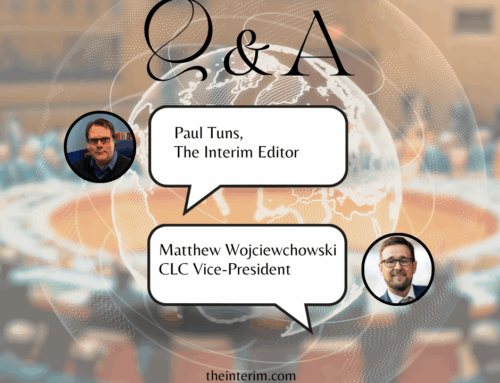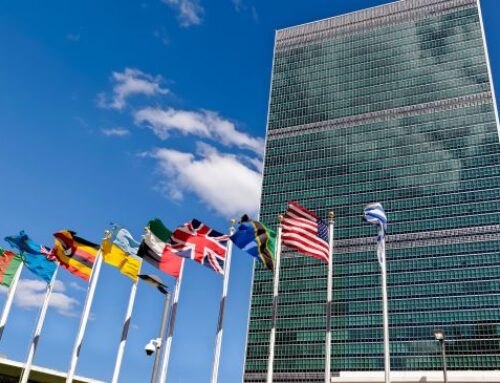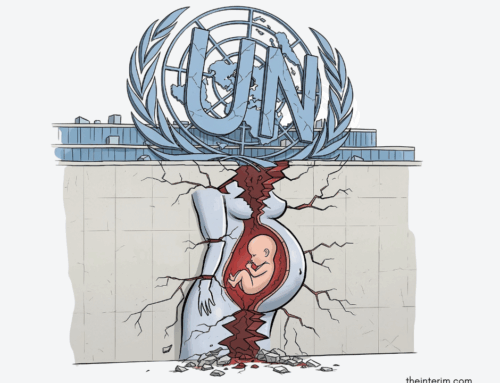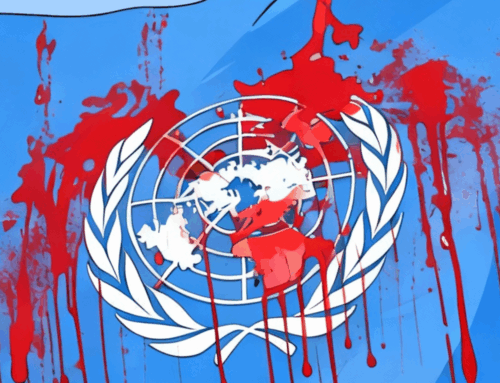“History is bunk,” so said Henry Ford. A much wiser man warned that those who refuse to learn from the experience of history are doomed to repeat it, and two recent publications bear witness to the bitter truth of this warning. The Nazi Doctors: Medical Killing and the Psychology of Genocide by Robert Jay Lifton traces the steps by which German physicians, trained as healers, became mass murderers. The second book, by Joseph E. Magnet and Eike-Henner W. Kluge Withholding treatment from Defective Newborn Children, investigates euthanasia practised today in Canadian hospitals, and it concludes by advocating that the direct killing of some babies be legalized. The authors go further. They claim that it is the “obligation” of the physician (“not the nurse and not the parents”) to terminate the life of the baby. Speaking of this “obligation” to kill children they add: “Whoever enters the profession voluntarily binds himself to that extent.” Doctors, therefore, according to Magnet and Kluge, have a “duty” to become professional killers. Thus history repeats itself.
Dr. Lifton’s work The Nazi Doctors was not intended to catalogue again the atrocities of the Holocaust. On the contrary, it is a scholarly piece of research by an eminent professor of psychology and psychiatry to discover – in a layman’s terms – the mental processes by which doctors came to accept their crossing the barrier between healing and killing, and the rationalization of their double role. He identifies five major steps which led to Auschwitz:
-coercive sterilization
-direct killing of “impaired” children in hospitals
-direct killing of “impaired” adults, collected mainly from mental hospitals, in centres equipped with carbon monoxide facilities
-“impaired” inmates of concentration and extermination camps
-mass killings – mainly, but not exclusively, Jews.
Sterilization was in vogue long before the Nazi Regime, and was not confined to Germany. It resulted from the spread of eugenics and the belief that some people were genetically superior, and only they should be allowed to breed. Other, “lesser types,” should be prevented from having children.
In 1933, with Hitler in power, the Sterilization Law was passed with a preliminary projected total of 410,000 sterilizations. The first subjects were mainly from institutions and included those afflicted with mental deficiency, epilepsy, schizophrenia, hereditary alcoholism, as well as grave bodily malformation. Once the first phase was underway “Hereditary Health Courts” were established to decide who else should be sterilized: doctors were legally required to report any patients in the above categories; possible hereditary defects were extended to include club-foot, cleft palate and hare-lip; it was suggested that families with any “impaired” member should be sterilized.
There was little open opposition to this programme. The Catholic Church disapproved, but beyond pressing to exempt Catholic judges and doctors, it avoided confrontation.
The killing of children
Meanwhile the second stage was being set for euthanasia, or direct medical killing, and indeed discussion had been going on since 1920. In that year a crucial work by Binding and Hoche, The Permission to Destroy Life Unworthy of Life, introduced the idea that killing of those whose “lives were not worth living” was a compassionate and “purely a healing treatment.” Hoche described the incurably ill, retarded and deformed children as “human ballast” and said that killing such people “is not to be equated with other types of killing – but is an allowable, useful act.”
The proponents of “mercy killing” became more vocal and active under Nazism. Carefully-made propaganda films to show the most serious deformities, and the worst cases of regressed patients, conditioned doctors into accepting the idea that there is “life unworthy of life,” and then into accepting the direct killing of children.
The Nazi authorities recognized that for nearly all doctors, and society at large, there is a great abyss between sterilization and the direct murder of babies. Consequently the whole programme to exterminate defective children was marked by secrecy and deception. A new medicalized structure was established by the collaborating physician to delude parents, physicians and the nation, and the names given to committees and institutions involved indicate their own sick minds.
The Reich Committee for the Scientific Registration of Serious Hereditary and Congenital Diseases was established. A directive was issued ordering the registration of all children under three years-of-age who were “suspected” to suffer form idiocy and mongolism (especially when associated with blindness and deafness), hydrocephaly, malformations of all of all kinds, and paralysis, etc. Midwives were required to report all such cases at birth. The form used stated that this information was “for the clarification of scientific questions in the field of congenital malformation and mental retardation,” and the nature of the questionnaire led physicians and health authorities assume the information was for statistical purposes.
A panel of four physicians and two bureaucrats used the questionnaires to decide (sight unseen) which children would be killed, and in what order. Handicapped newborns were murdered first, then children up to three years, and older ones later.
Because secrecy was necessary the actual killing was done in special units of selected children’s institutions where consultants and chiefs were politically reliable. To cover up the real purpose of these killing-centres they were given names such as “Children’s Specialty Department” and even “Therapeutic Convalescent Institutions.” Eventually there were 30 such centres in Germany, Austria and Poland.
Parents who were asked to consent to the transfer of their children were assured “The child would receive the best and most modern therapy available.” When parents were reluctant to have their child sent to a distant institution they felt the iron first: they were threatened with loss of guardianship, or even labour camp.
The children were usually kept for a few weeks at the “Therapeutic Convalescent Unit” before they were killed. The actual murder was arranged by the medical director and the usual method was to dissolve luminal tablets in liquid and give frequent doses until the child lapsed into a coma and died. Sometimes luminal was injected, as was morphine-scopolamine. Still others were starved to death – to save the expense of medication. The final medical lie was on the falsified death certificate, and here the doctors were free to use their imaginations.
One of the physicians interviewed by Dr. Lifton said: “according to the thinking of that time, in the case of children, killing seemed somehow justifiable…whereas in the case of the adult mentally ill, that was definitely pure murder.” Another doctor said of the killing: “If you had directed a nurse to go from bed to bed shooting these children…that would not have worked…There was no killing, strictly speaking…People felt this was not murder, it was a putting-to-sleep.” This doctor had been responsible for making false records, filling out forms that resulted in children’s deaths, and signing false death certificates.
The killing of adults
For those conditioned to accept the killing of handicapped babies the extension of the project to include the killing of adults was logical. Hitler went straight to the doctors to create another medical bureaucracy, in a programme called T 4. Once again, questionnaires (phrased to suggest they were intended for statistical and medical purposes) were issued. They were sent to all psychiatric institutions and to hospitals and homes for chronic patients. It is significant to note that patient’s financial status and number of visitors were of importance.
A panel of doctors decided (again, sight unseen) which patient would be killed. These were taken to one of six killing centres where, by order, it was a physician who did the killing. At first doctors killed by injection, but when this method proved too slow they began to use carbon monoxide gas. False death certificates were sent to families.
This programme could not be hidden , and it was resisted by the ordinary German people, and roundly condemned by courageous physicians, and Protestant and Catholic religious leaders who risked their lives to do so. Dietrich Bonhoeffer, the son of the eminent psychiatrist Karl Bonhoeffer, was a Protestant Pastor who was put to death for his resistance in 1945.
Officially this programme was cancelled; in reality the killing continued and was intensified. Mass murder began, with doctors in charge, and as the war continued and the wholesale slaughter of the Jews began, it was the doctors who stood by the ramp and selected the ones to be killed as they arrived at Auschwitz.
One German provincial judge risked his life when he wrote to Franz Gurtner, the minister of justice, objecting to the killing of mental and chronic-care patients. He wrote: “Man commits an act of …extraordinary arrogance when he takes it upon himself to put an end to a human life because, with his limited understanding, he can no longer grasp the entire meaning of that life.”
That statement was true in the 1940s of the Nazi extermination programme; it is equally true in the pediatric wards of Canadian hospitals, (today in 1986.) The Toronto Star (June 6, 1983) reported in an article that one doctor said “it’s happening everywhere, but nobody’s talking about it.” He could have been talking about a “Therapeutic Convalescent Institution,” but he was speaking of babies in Canadian hospitals. It si time somebody did talk about it.
Euthanasia
The book Witholding Treatment form Defective Newborn Children by Joseph Eliot Magnet, Professor of Law, University of Ottawa, and Eike-Henner W. Kluge, Professor of Philosophy, University of Victoria, follows the 1920s theories of Binding and Hoche. The authors accept without question that there are children whose “lives are not worthy of life” and for whom killing is (in the words of Hoche) “an allowable, useful act,” indeed a “compassionate act.”
According to Magnet and Kluge their research shows that their view is shared by many doctors in Canada, and though the latter are unwilling to be quoted by name they admit that active euthanasia, or the direct killing of handicapped babies, is practised in pediatric wards. Two methods of killing are documented. The first involves the increasing of doses of pain-killers, e.g. morphine, even though the child shows no evidence or pain, or is sleeping. The clearly understood intention is to hasten the baby’s death. (This was the method used by the Nazis “Therapeutic Convalescent Institutions.”) The second method used is that doctors or nurses hold back part of the dosage, which is recorded as administered. As in Nazi Germany, the death certificates must be falsified.
Magnet points our that this infanticide is against the law. “Active euthanasia is unlawful. There is no excuse in law to kill by administration of a deadly drug, no matter how kindly the motive…It is equally murder if lethal dosages are administered drop-by-drop or dose-by-dose.” On the other hand, Magnet and Kluge believe that “euthanatizing radically defective neonates is not merely permissible but obligatory.” Accordingly their book deals with two major concerns: how to standardize the criteria for the selection of babies for euthanasia; how to legalize the killing.
Criteria for selection
With increasing medical knowledge and improved technology many babies who decades ago would have died shortly after birth are now surviving, often with multiple handicaps. Admittedly some of these are babies for whom there is, as yet, no known treatment, but there are many cases where treatment is possible and available in the local hospital or in specialized centres, and yet a decision is made to withhold treatment. If one accepts the results of the research by Magnet and his assistants it becomes evident that in most cases it is the doctor who decides whether or not the child will have a chance to live. Often parents are excluded from the decision, and are unaware that there was any choice. Others are not informed of life-saving procedures, or they are subjected to pressure. Doctors freely stated that if they wished to withhold treatment “the decision is ours.” It is evident, too, that parents are being deceived as were the Germans.
Obviously anti-discrimination laws do not apply to the handicapped newborn. A baby born to a single unwed mother, or to parents of lower intelligence, or where the family is in a lower economic bracket, is less likely to be helped than a more-seriously-damaged child from a wealthier, more highly-educated family. Pragmatists may say this approach makes sense; but is it just?
Mr. Magnet discusses at length the legal aspects of how, and by whom decisions of treatment or non-treatment are made. His main thrust, however, is concerned with the criteria for deliberate neonatal death (or “Giving the Hemlock” as he terms it) which he believes should be obligatory in some cases. Pro-life doctors, nurses and religious hospitals should be aware of the threats that lie behind some of his statements.
“The ethical acceptability of deliberate neonatal death should not be compromised by personal preferences of individual decision-makers nor perverted by chance variations in implementation. Decision-making and action should not be allowed to diverge because of non-ethical variables like parental religious attitudes, preferences of individual health-care practitioners, or vagaries of law enforcement.” (emphasis mine)
“Assessment of religious values in surrogate decision contexts is as simple as it is negative. Religious values are entirely out of place.”
A statutory proposal
The Criminal Code brands euthanasia, either active or passive as murder. Nevertheless, both kinds of euthanasia are being practised in Canadian hospitals. In order to legalize what is at present illegal, and to remove the possibility of prosecution, Magnet suggests that the Criminal Code Section 197 be amended. Two amendments are as follows.
S.197
(a) Notwithstanding subsection 1, no one is under a legal duty to provide medical treatment to an infant where the infant displays no reasonable prognosis for cognitive, sapient existence, or no reasonable potential for development to an existence of acceptable quality, according to the standards of a person due discernment.
(e) In all cases that fall under paragraph 1.1 (a), upon request by the parent or guardian, the attending physician may employ such measures as he deems, upon due consideration, to be appropriate for terminating the life of the infamt as quickly and painlessly as possible.
There we have it – a proposal to kill babies whose existence would not measure up to an “acceptable quality” in the opinion of some person of “due discernment.”
For many pro-life people throughout Canada there will be a bitter irony in reading or hearing about this book, for the name of Joseph Magnet is not unknown to them. At the time when pro-life lawyers were desperately trying to get some protection for the unborn child written into the Charter of Rights, and were pointing out the potential for even greater threats, the Canadian Conference of Catholic Bishops decided to ask fro another legal opinion. They chose Joseph Magnet. His written opinion was that the charter would not pose great danger to the unborn, and it is entirely possible he could be correct. The opinion, however, directly and indirectly, resulted in a lessening of pressure on MPs to close any loopholes. Notwithstanding Magnet’s opinion, the fact remains that the main thrust of the defence at the Morgentaler trial, and in the Ontario and Supreme Courts of Appeal was largely based on the claim that the present abortion law contravenes the Charter. Until the Supreme Court decides this issue the illegal abortuaries in Toronto will continue to operate, and thousands of babies will be destroyed.
A major question then was “why did the Bishops seek advice from someone who was not pro-life, when there were other legal and constitutional experts who were at least equally competent, and pro-life?” That question remains unanswered, but with the projected changes in the Criminal Code and the new provisions suggested with regard to euthanasia, it will be imperative to ensure that any future legal advice comes from authentic pro-life, and not anti-life sources. We are already too far along on the road to Auschwitz.




